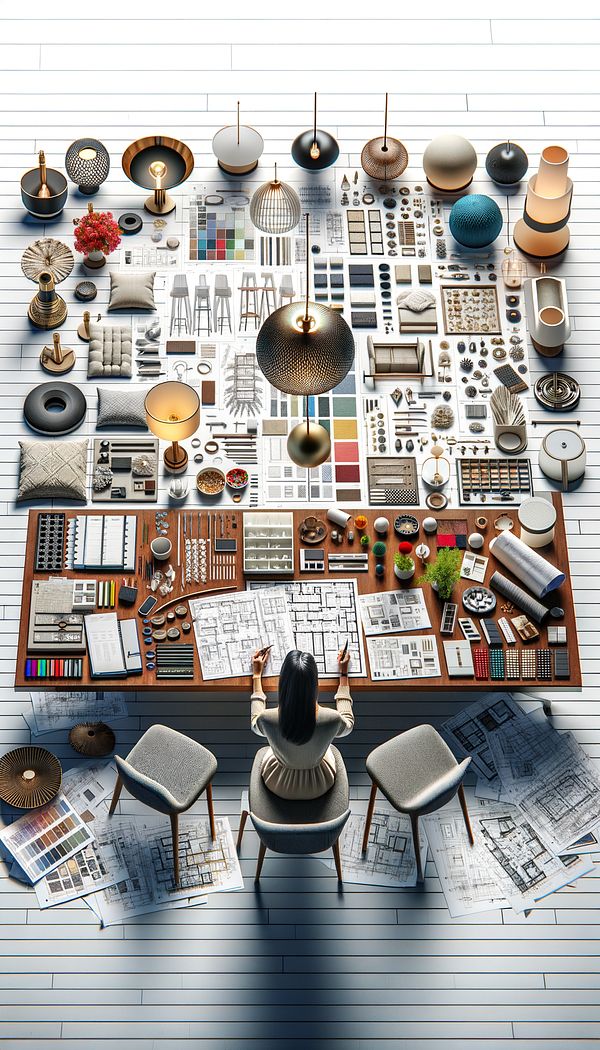What is FF&E?
FF&E refers to the movable furniture, fixtures, and equipment within a building.
Description
FF&E stands for Furniture, Fixtures, and Equipment. This encompasses all the items within an interior space that can be moved without causing damage to the property. While fixtures might suggest permanency, within the context of FF&E, they refer to items that are attached but can be removed and replaced, such as lighting fixtures or built in cabinets.
These items are key elements in interior design because they not only contribute to the functionality of a space but also its aesthetic. FF&E selections can dramatically alter the look and feel of a room, making it crucial for interior designers to consider these components carefully during the design process.
Additionally, FF&E has significant financial implications for both design budgets and asset valuations. As such, it is commonly detailed in budgeting documents and property assessments to distinguish these movable items from the building's structure, which is not included in FF&E calculations.
Usage
In a hotel redesign project, the FF&E would include replacing beds, desks, chairs, window treatments, and lighting fixtures to update the rooms' appearance and improve guest comfort. In an office space, it might involve selecting ergonomic office chairs, modular workstations, and energy-efficient lighting.
FAQs
-
Are appliances considered part of FF&E?
Yes, appliances such as refrigerators, microwaves, and dishwashers are typically considered part of Equipment in FF&E, as they are movable and integral to the functionality of spaces like kitchens.
-
How does FF&E differ from real property?
FF&E includes movable items that are not permanently attached to a building, making them personal property. In contrast, real property refers to the land and any permanently attached improvements, such as the building itself.
-
Can FF&E be leased?
Absolutely, FF&E items can be either purchased outright or leased. Leasing can be a financially viable option for businesses looking to minimize upfront costs or frequently update their interior spaces.
Practical Application
When planning the interior design of a space, start by creating an FF&E schedule to itemize and budget for all the furniture, fixtures, and equipment needed. Consider not only the aesthetic appeal of each item but also its durability, maintenance requirements, and how it contributes to the functionality of the space. Furthermore, keep sustainability in mind by selecting items that are environmentally friendly and ethically produced.
-
Furniture Types599 articles
-
Lighting111 articles
-
Decorative Techniques322 articles
-
Space Planning & Layout134 articles
-
Construction & Building86 articles
-
ApronAn apron is a decorative or structural panel fixed beneath a surface such as a tabletop, window ledge, or countertop.
-
Serpentine FrontA serpentine front refers to a curved, undulating form on the front edge of furniture.
-
Builder, HomeIn the context of interior design, home builder refers to a person or company specializing in constructing residential homes.
-
Muted ColorsMuted colors are hues that have been dulled or desaturated.
-
Spiral TurningSpiral Turning is a decorative woodworking technique that creates twisted patterns along the length of a piece of wood.
